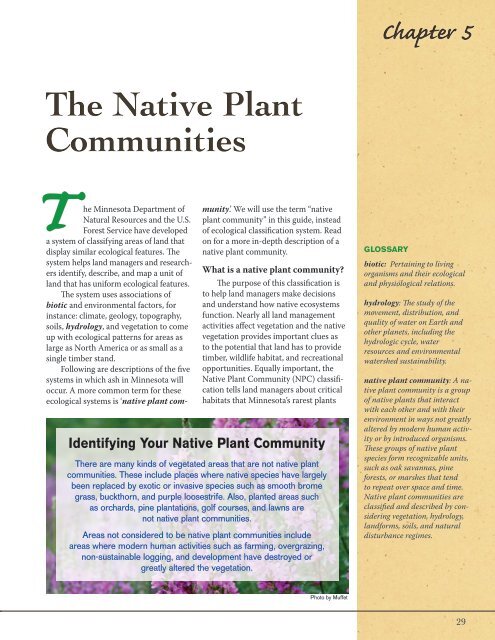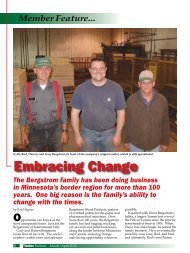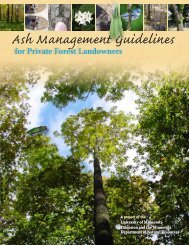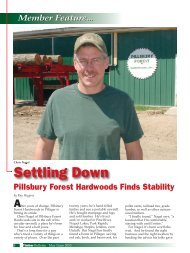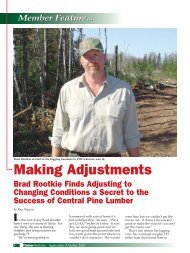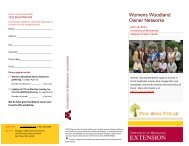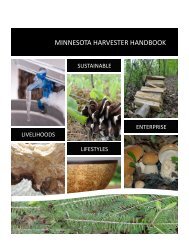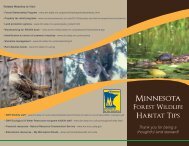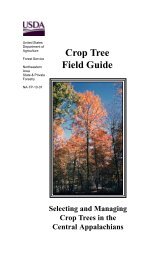Ash Management Guide for Private Forest Landowners
Ash Management Guide for Private Forest Landowners
Ash Management Guide for Private Forest Landowners
Create successful ePaper yourself
Turn your PDF publications into a flip-book with our unique Google optimized e-Paper software.
Chapter 5The Native PlantCommunitiesThe Minnesota Department ofNatural Resources and the U.S.<strong>Forest</strong> Service have developeda system of classifying areas of land thatdisplay similar ecological features. Thesystem helps land managers and researchersidentify, describe, and map a unit ofland that has uni<strong>for</strong>m ecological features.The system uses associations ofbiotic and environmental factors, <strong>for</strong>instance: climate, geology, topography,soils, hydrology, and vegetation to comeup with ecological patterns <strong>for</strong> areas aslarge as North America or as small as asingle timber stand.Following are descriptions of the fivesystems in which ash in Minnesota willoccur. A more common term <strong>for</strong> theseecological systems is ‘native plant community.’We will use the term “nativeplant community” in this guide, insteadof ecological classification system. Readon <strong>for</strong> a more in-depth description of anative plant community.What is a native plant community?The purpose of this classification isto help land managers make decisionsand understand how native ecosystemsfunction. Nearly all land managementactivities affect vegetation and the nativevegetation provides important clues asto the potential that land has to providetimber, wildlife habitat, and recreationalopportunities. Equally important, theNative Plant Community (NPC) classificationtells land managers about criticalhabitats that Minnesota’s rarest plantsIdentifying Your Native Plant CommunityThere are many kinds of vegetated areas that are not native plantcommunities. These include places where native species have largelybeen replaced by exotic or invasive species such as smooth bromegrass, buckthorn, and purple loosestrife. Also, planted areas suchas orchards, pine plantations, golf courses, and lawns arenot native plant communities.Areas not considered to be native plant communities includeareas where modern human activities such as farming, overgrazing,non-sustainable logging, and development have destroyed orgreatly altered the vegetation.GLOSSARYbiotic: Pertaining to livingorganisms and their ecologicaland physiological relations.hydrology: The study of themovement, distribution, andquality of water on Earth andother planets, including thehydrologic cycle, waterresources and environmentalwatershed sustainability.native plant community: A nativeplant community is a groupof native plants that interactwith each other and with theirenvironment in ways not greatlyaltered by modern human activityor by introduced organisms.These groups of native plantspecies <strong>for</strong>m recognizable units,such as oak savannas, pine<strong>for</strong>ests, or marshes that tendto repeat over space and time.Native plant communities areclassified and described by consideringvegetation, hydrology,land<strong>for</strong>ms, soils, and naturaldisturbance regimes.Photo by Muffet29


